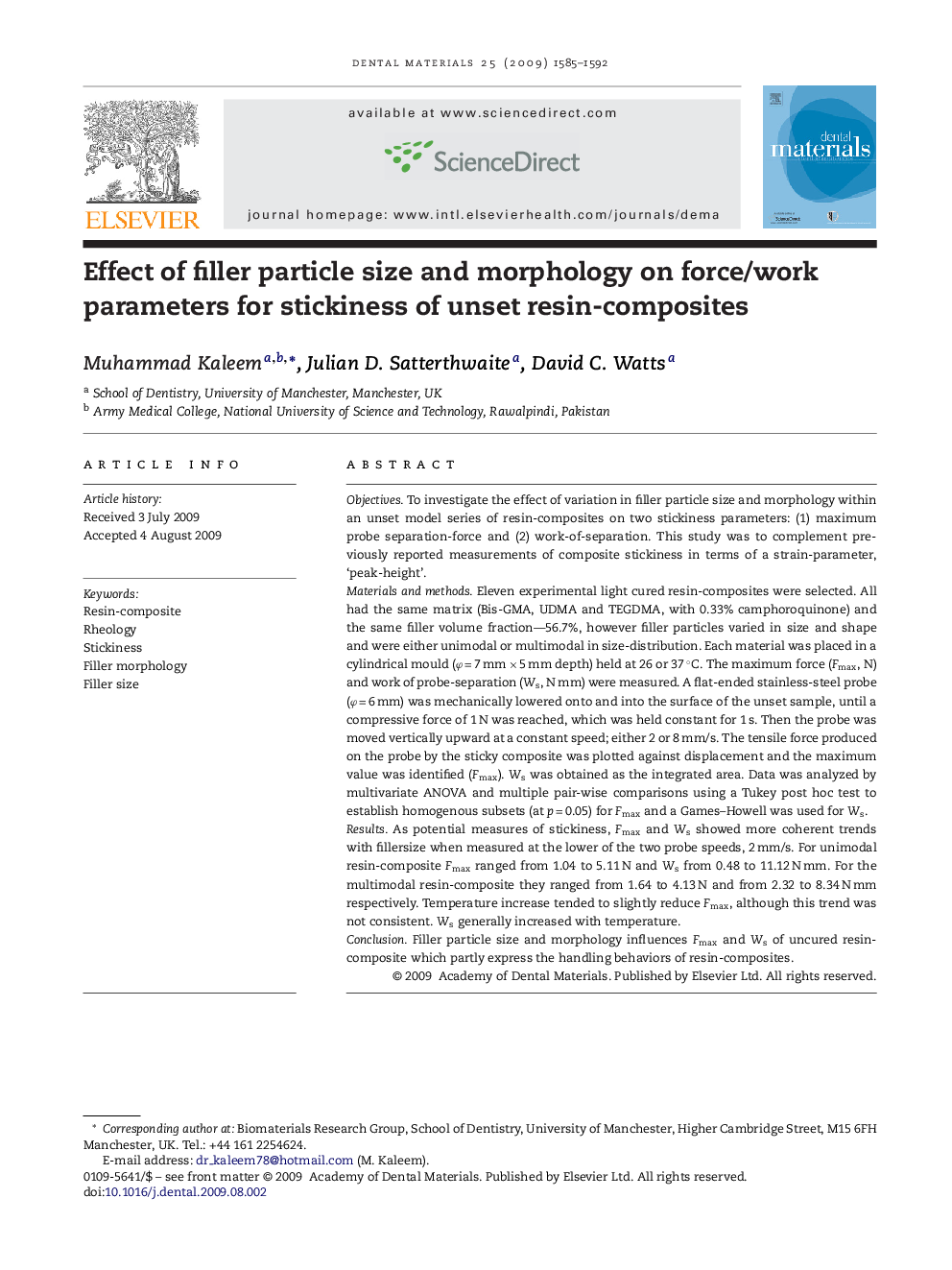| کد مقاله | کد نشریه | سال انتشار | مقاله انگلیسی | نسخه تمام متن |
|---|---|---|---|---|
| 1421970 | 986432 | 2009 | 8 صفحه PDF | دانلود رایگان |

ObjectivesTo investigate the effect of variation in filler particle size and morphology within an unset model series of resin-composites on two stickiness parameters: (1) maximum probe separation-force and (2) work-of-separation. This study was to complement previously reported measurements of composite stickiness in terms of a strain-parameter, ‘peak-height’.Materials and methodsEleven experimental light cured resin-composites were selected. All had the same matrix (Bis-GMA, UDMA and TEGDMA, with 0.33% camphoroquinone) and the same filler volume fraction—56.7%, however filler particles varied in size and shape and were either unimodal or multimodal in size-distribution. Each material was placed in a cylindrical mould (φ = 7 mm × 5 mm depth) held at 26 or 37 °C. The maximum force (Fmax, N) and work of probe-separation (Ws, N mm) were measured. A flat-ended stainless-steel probe (φ = 6 mm) was mechanically lowered onto and into the surface of the unset sample, until a compressive force of 1 N was reached, which was held constant for 1 s. Then the probe was moved vertically upward at a constant speed; either 2 or 8 mm/s. The tensile force produced on the probe by the sticky composite was plotted against displacement and the maximum value was identified (Fmax). Ws was obtained as the integrated area. Data was analyzed by multivariate ANOVA and multiple pair-wise comparisons using a Tukey post hoc test to establish homogenous subsets (at p = 0.05) for Fmax and a Games–Howell was used for Ws.ResultsAs potential measures of stickiness, Fmax and Ws showed more coherent trends with fillersize when measured at the lower of the two probe speeds, 2 mm/s. For unimodal resin-composite Fmax ranged from 1.04 to 5.11 N and Ws from 0.48 to 11.12 N mm. For the multimodal resin-composite they ranged from 1.64 to 4.13 N and from 2.32 to 8.34 N mm respectively. Temperature increase tended to slightly reduce Fmax, although this trend was not consistent. Ws generally increased with temperature.ConclusionFiller particle size and morphology influences Fmax and Ws of uncured resin-composite which partly express the handling behaviors of resin-composites.
Journal: Dental Materials - Volume 25, Issue 12, December 2009, Pages 1585–1592